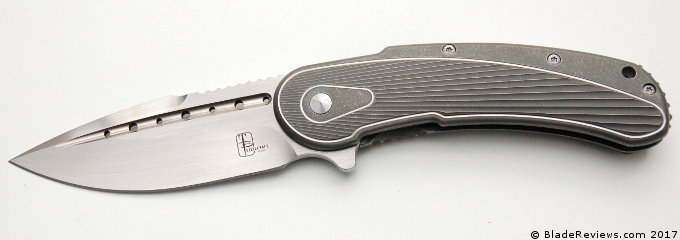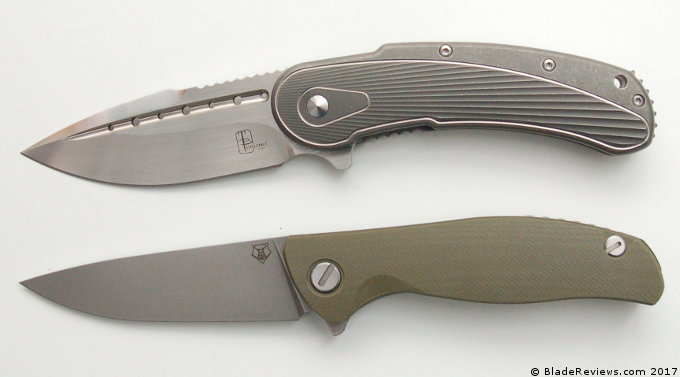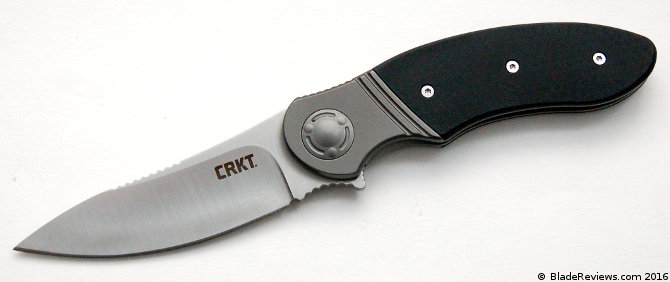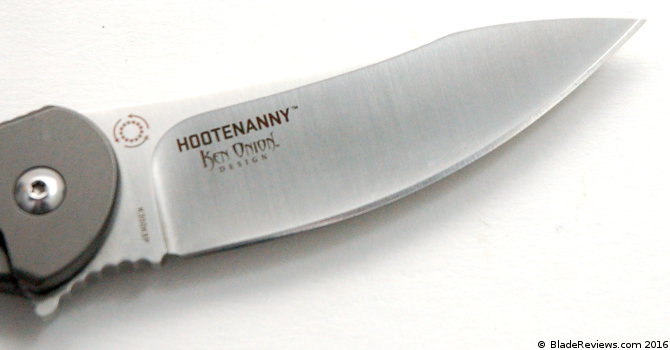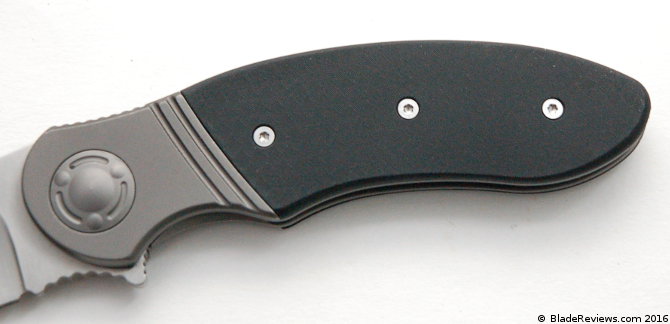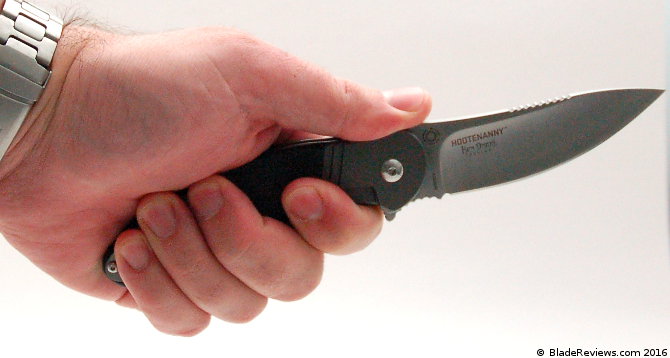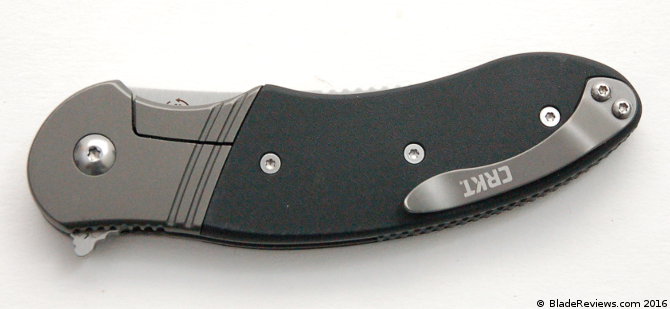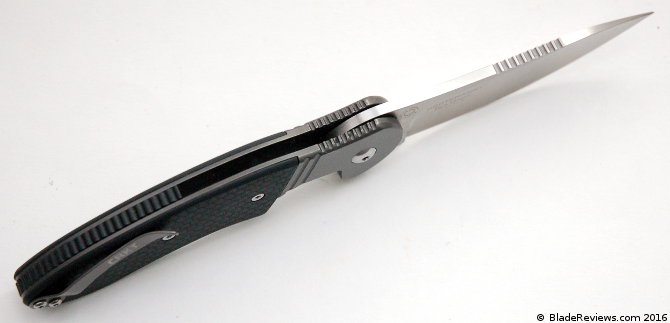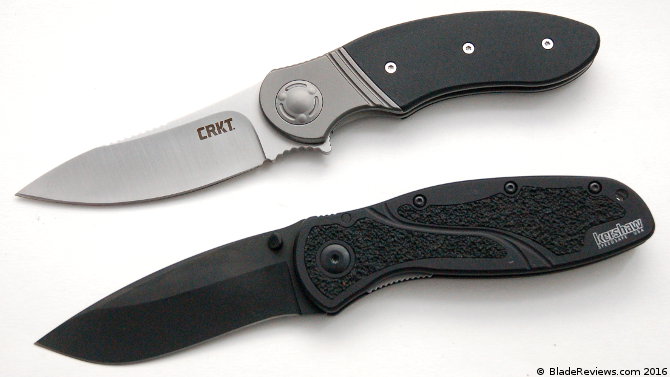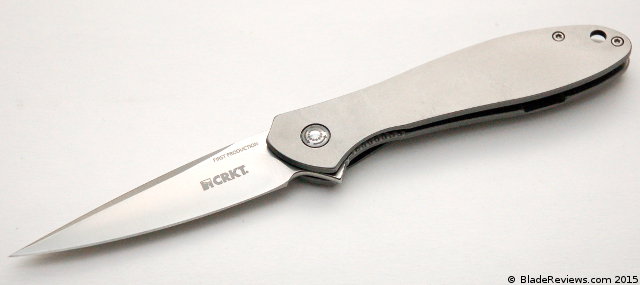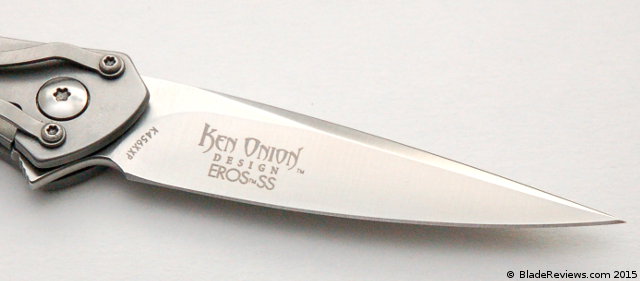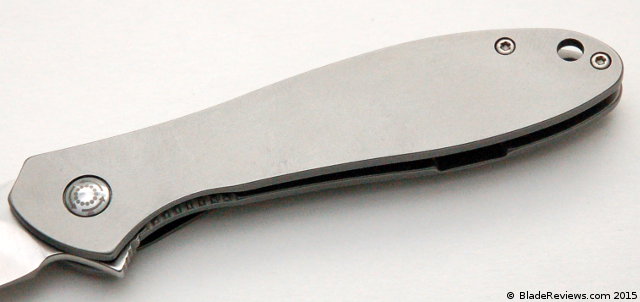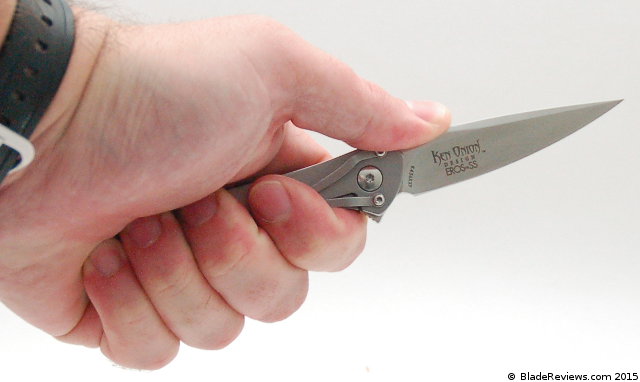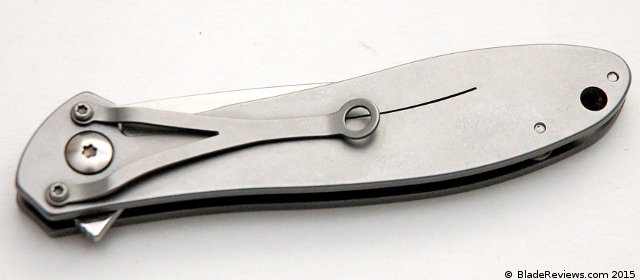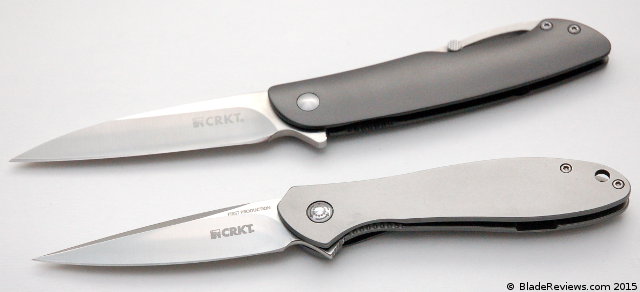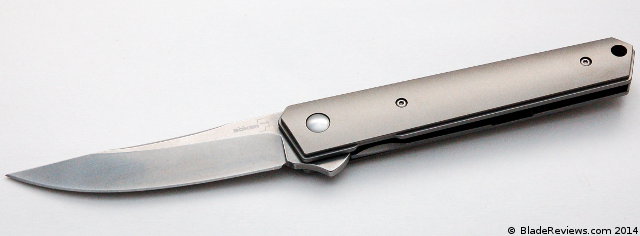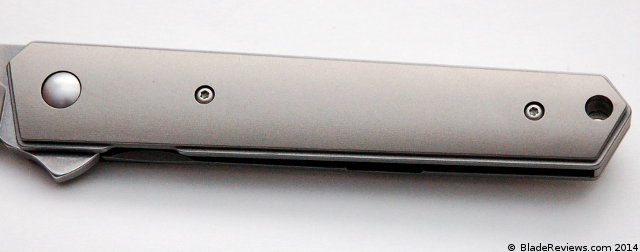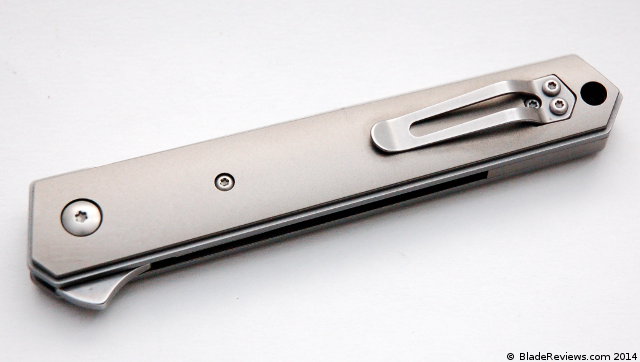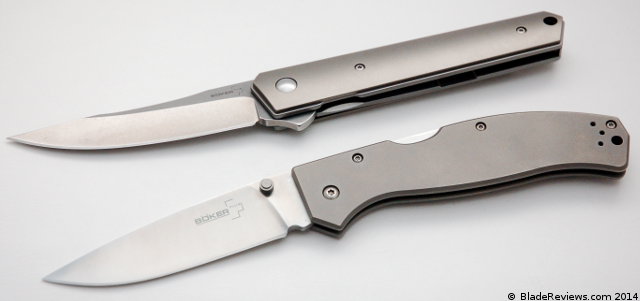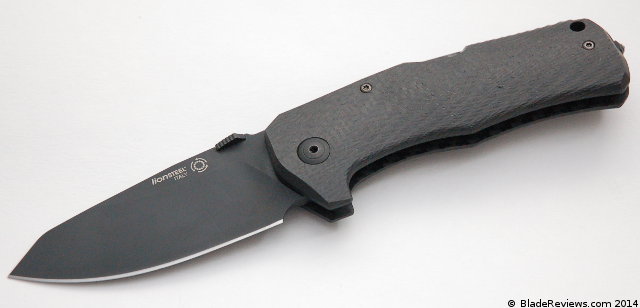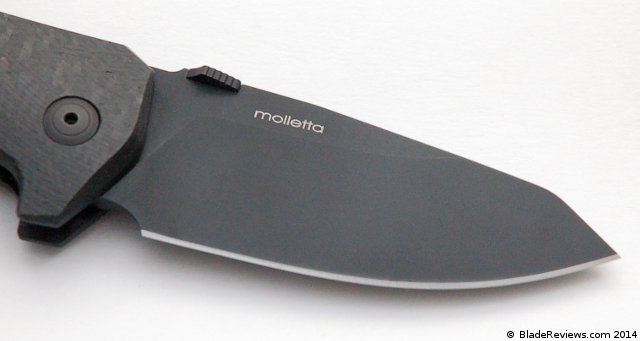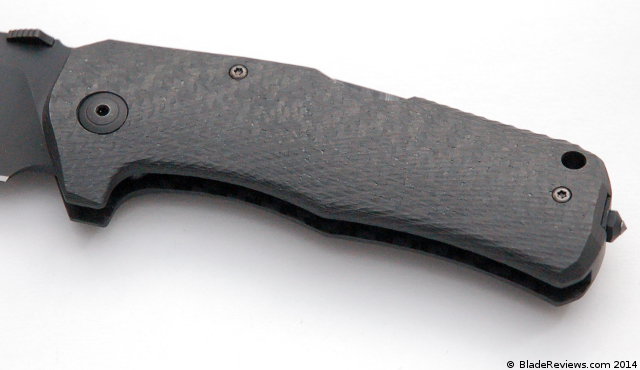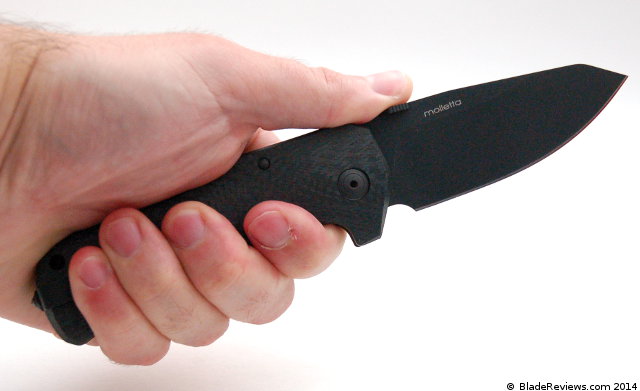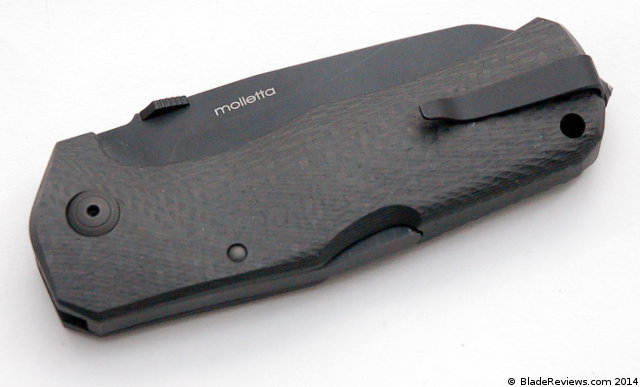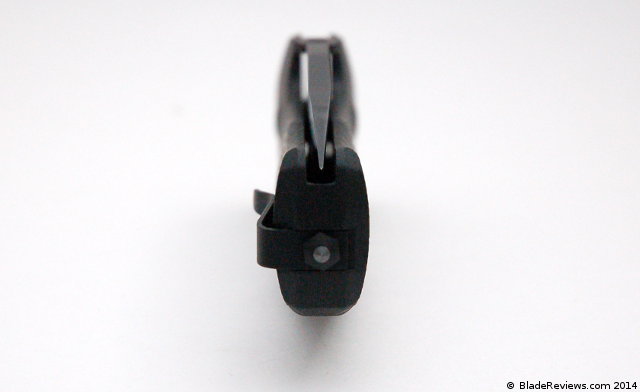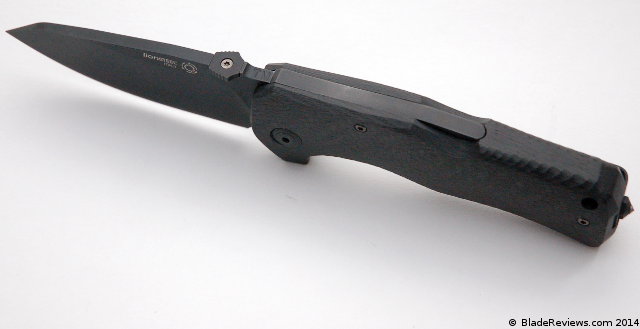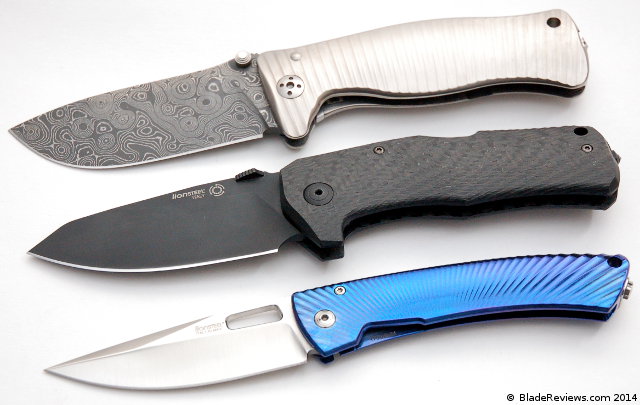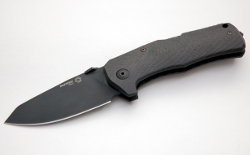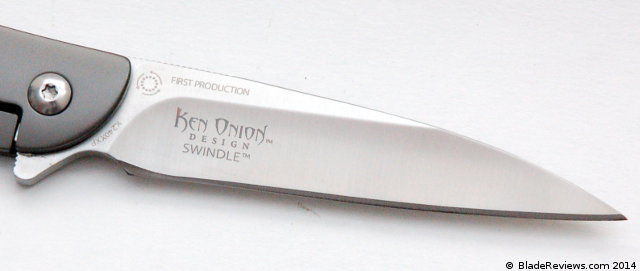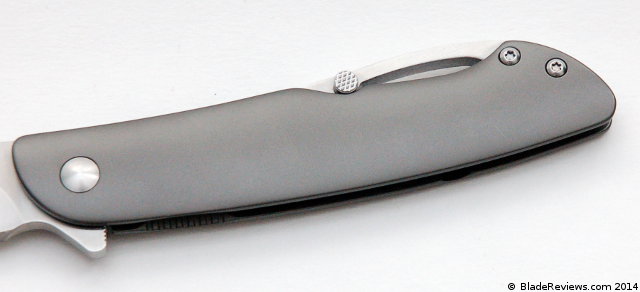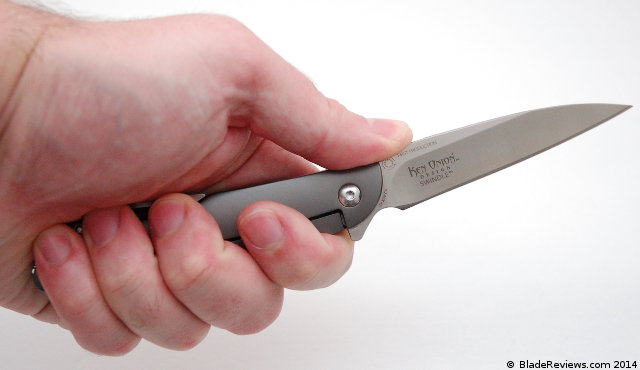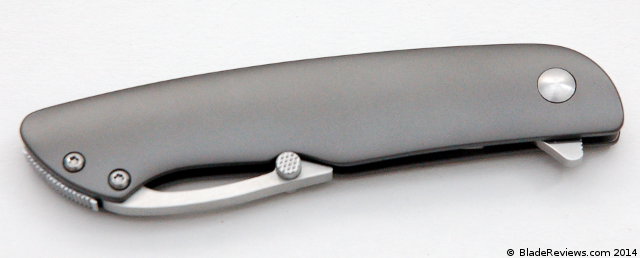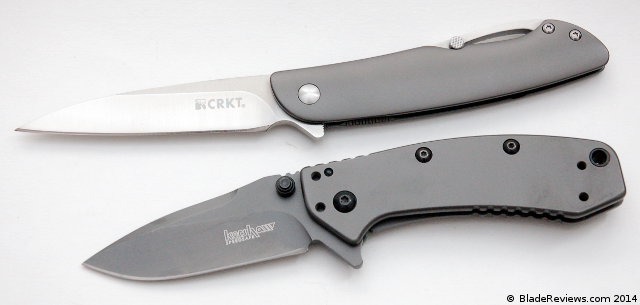Todd Begg is known for his heavily machined and highly ornamented knives. A few years ago it would have been inconceivable to think that his Bodega folder could be recreated as a mass market production piece.
Buy the Bodega at BladeHQ | Buy the Bodega at KnivesShipFree
But there it was, staring back and Andrew and I at the 2015 BLADE show. I believe it was actually his kwaiken model, but he had one of his original knives and the Steelcraft version sitting on the table next to each other. We couldn’t distinguish which was the real deal, and which was the mass produced version. The Steelcraft version was that good.
The Steelcraft series is a collaboration between Begg and Reate Knives. Reate is a high end Chinese knife manufacturer. Arguably they are the highest end, ousting WE Knives and Kizer with their build quality and finish. It’s another brand that I haven’t had the time to cover. In part because their regular lineup doesn’t inspire me that much. The knives look technically perfect, but the designs are largely forgettable.
However, this Steelcraft collaboration with Begg is the perfect vehicle to showcase Reate’s manufacturing chops. Todd Begg is an incredibly talented designer, and this collaboration with Reate is one for the ages.
General Dimensions and Blade Details
The Steelcraft Bodega has an overall length of 8.875″, a 3.75″ blade, weighs 6.35 ounces, and is made in China. There is a smaller version of the knife, the Steelcraft Mini Bodega. If I had thought this through a little better before making my purchase I would have gone with that. But who actually researches knives before they buy them?
This full size version is quite large. It’s a bit excessive for my style of daily carry, but it’s a joy to behold, and I’m sure some will love EDCing this larger knife. The mini Bodega will be better for urban EDC, if you can bring yourself to carry something this pretty. That said, there is no shame in simply wanting this as a collectible.
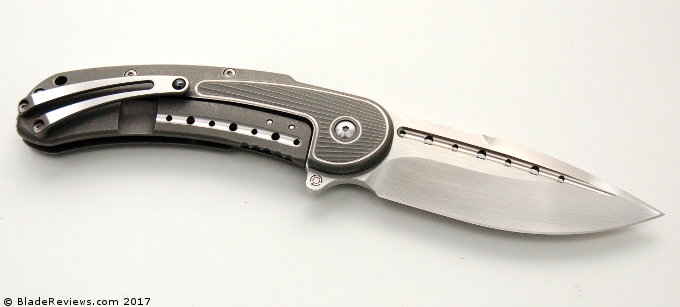
The blade is a wide gleaming drop point with a high hollow grind, toothy jimping, a prominent harpoon tip, and Todd’s signature milled fuller running most of the length of the blade. This ornate blade has been meticulously ground, and this knife is all about the details. The grinds are symmetrical, the milling is crisp, and the satin finish is lustrous. I like how they even broke the edges along the flipper and finger choil. This makes the knife more comfortable to use.
The Bodega comes with a S35VN blade. This is a steel that needs no explanation for enthusiasts of high end knives. It’s a staple in Chris Reeve’s lineup, and has made an appearance on countless reviews of high end folders. This is the next generation of S30V. While it’s not a super exotic steel, it performs admirably. It’s easy to sharpen, holds a fine edge, and machines nicely. It’s a steel that was specifically formulated for cutlery, and I’m never sorry to see it on a knife.
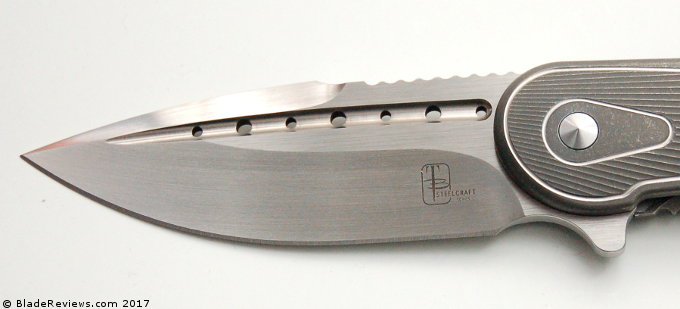
My Steelcraft Bodega came with an even and razor sharp edge. I haven’t used this knife hard, but it has no problem with cardboard, paper, and food prep. The hollow grind gets thin behind the edge, and the knife slices neatly. I’ve been able to keep the Bodega sharp with my strops, and have had zero issues with rust or corrosion. While I haven’t given this Bodega a beat down, S35VN is a known quantity.
Handle, Ergonomics, and Pocket Clip
Where do I even begin with this handle? The handle is a thing of technical beauty. Like an aging escort, this Bodega has been drilled from every angle. The outer face of the titanium handle is curved and rounded. That in itself is nice, but then they added the fluted pattern and chased the outlines in silver.
Additionally, the backspacer has been checkered and jimped. The holes for the body screws have been counter sunk and polished. The lock bar has been given the same treatment as the fuller of the blade. Inside the handles have been pocketed out to lighten up the knife and improve the balance. Begg uses regular torx hardware for the body screws, but there is a nice oversized decorative pivot.
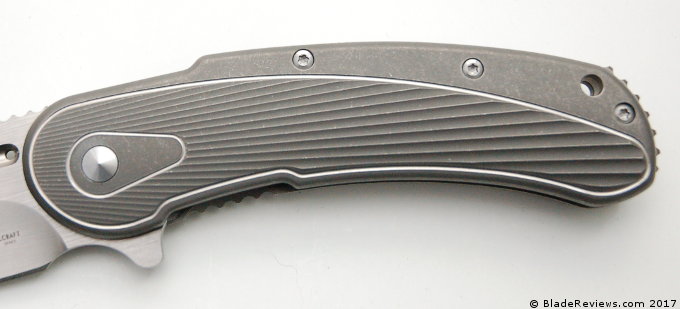
A cool thing about the Bodega is the variety of anodizations they offer. I’ve got the gray and silver monochromatic version, but if you prefer color the Bodega is offered in a variety of colors, including a striking Blue and Gold version that Tony reviewed. There is a black on black version that is also stunning. I like the austerity of my particular knife, but the anodized versions are striking.
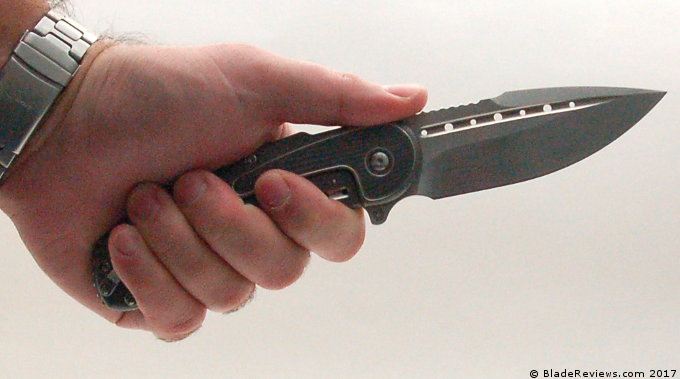
This full size Bodega fills the hand nicely, and you have a couple options for finger placement thanks to the forward choil. Generally speaking this is a comfortable knife. However, I find the toothy jimping on the spine and lock bar to be a little much. Here it is almost a decorative element, providing a textural contrast, but at the end of the day this knife is designed for use and I find the super toothy jimping to be a bit irritating. Especially if I was to use this knife for aggressive carving, or crunching through a lot of manilla rope.
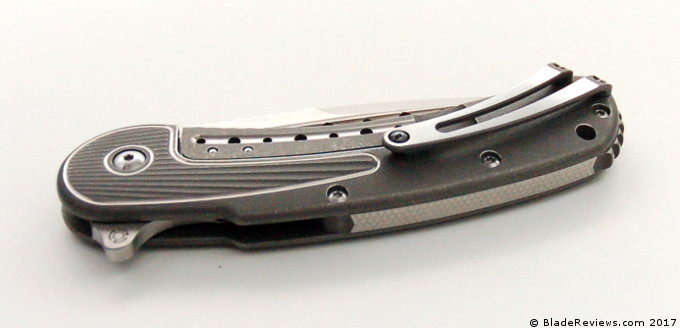
The pocket clip is an over the top Begg special. It’s a milled clip but uses a large ceramic ball bearing for the point of contact with your pocket. It is completely unique. More importantly, it’s fully functional. Titanium milled clips can be hit or miss, as it’s tough to get the tension right. This one works well, and visually it’s a unique detail. The Bodega carries as you would expect from a large full titanium folder. The relatively thin curved handle mostly stays out of the way, and at 6.35 ounces there is some heft, but not enough to pull your pants down.
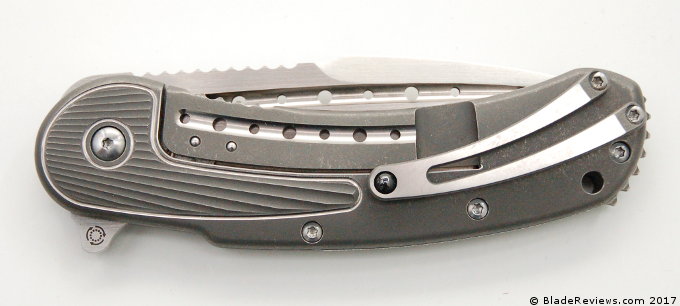
Deployment and Lockup
The Steelcraft Bodega is an IKBS bearing equipped flipper. Flipping action is solid, and the bearings are buttery smooth. I’d give this an 8.5 out of 10 on my flipper scoring system. Action is crisp and snappy. The flipper tab is prominent. There isn’t any jimping on the tab, but I don’t think it needs it. There is plenty of steel here to get a finger on, and the blade deploys reliably with an excellent snap.
Here is a shot of the Bodega next to my Shirogorov F3:
For lockup we have a titanium framelock with a steel insert. Lockup is early on my knife. About 20% according to my eyeball. There isn’t a smidge of blade play in any direction. The lock is easy to disengage thanks to the toothy jimping, and a thoughtful design. There is no lock stick at all. The steel lock bar insert doubles as an overtravel preventer, so you don’t have to worry about hyperextending your lock bar.
Blade centering is dead nuts center on my knife. I would expect nothing less from a knife this meticulously machined.
Todd Begg Steelcraft Bodega Review – Final Thoughts
This Steelcraft Bodega is unlike any other knife. Todd Begg is a brilliant knife designer, and the folks at Reate knocked it out of the park. It’s a testament to how far Chinese manufacturing has come. I know some will still turn their noses up at this one because it’s made in China. Spend the money on NASCAR tickets, what do I care. I’m here to tell you this knife has been beautifully done.
This is everything you would expect from a high end folder. At close to $450, you will pay for the premium, but it’s damn hard to find a fault with this knife. The closest thing I could come to critical feedback, is that the jimping is a little rough for extended use. The knife is also too pretty for me to seriously use without feeling guilty. I don’t feel that way about my Strider SnG, which costs a similar amount of money. But the ornate nature of this knife makes it tough for me to beat up on. This is an immaculate knife.
Todd Begg’s in house version of the Bodega starts at $850 (for the “field grade” versions), and quickly go up from there. For $450 I think the Steelcraft version gives you an excellent feel for what his designs are all about. Well worth checking out if you have the money and are interested in exploring his designs.
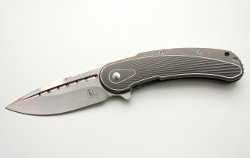
Todd Begg Steelcraft Bodega – From $460.00
From: BladeHQ
I recommend purchasing the Steelcraft Bodega at BladeHQ, KnivesShipFree, or Amazon.
